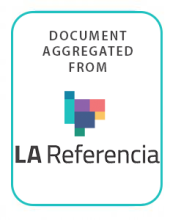Land Library
Welcome to the Land Portal Library. Explore our vast collection of open-access resources (over 74,000) including reports, journal articles, research papers, peer-reviewed publications, legal documents, videos and much more.
/ library resources
Showing items 1 through 9 of 526.The dynamics of urbanization and growth of the Latin American city is due to different geographical, economic, and social factors.
La cuestión agraria en Brasil, por ser bastante compleja, contiene varias caras y esta disertación aborda una de esas posibilidades de análisis: los conflictos agrarios generados por el Proyecto de minería Ferro Carajás S11D en el municipio de Canaán dos Carajás, estado de Pará.
Nesta pesquisa, tem-se como objetivo analisar as narrativas do livro Mais ao Sul (2008) de Paloma Vidal – corpus deste trabalho.
This Resolution, consisting of 82 articles divided into seven Chapters and 16 Annexes, ratifies the Tourist Planning Plan (POT) of the Tourist Zone of Salamansa (ZTS), within the island of São Vicente.
This Presidential Decree, consisting of 156 articles divided into seven Chapters and one Annex, regulates the principles and norms for the organization and functioning of Local Government Bodies, establishing the respective organizational structures, as well as their operational mechanisms in the
This Decree-Law, redefines the Southern Integral Tourism Development Zone (ZDTI) of "Baia das Gatas" within the island of São Vicente.
This Decree-Law establishes the third amendment to Decree-Law No. 37/2014 of 23 July, amended by Decree-Law No. 44/2016 of 6 September, and by Decree-Law No. 52/2015 of 24 September.
This Law, consisting of 34 articles divided into four Chapters, creates a simplified cadastral information system. It adopts measures for the immediate identification of the land structure and the ownership of the rural and mixed lands.
This Law, consisting of 58 articles divided into four Chapters, provides for the regime of use of uncultivated lands and other community productive lands owned and managed by local communities integrated in the cooperative and social sector as means of production.


